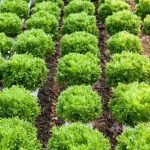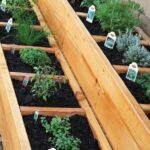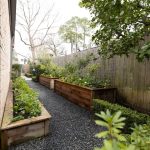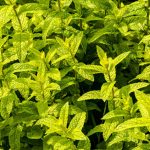Planning a successful vegetable garden in Sacramento requires careful consideration of the unique climate and soil conditions in the area. A Sacramento vegetable gardening calendar is an essential tool for any gardener looking to maximize their yield and ensure a bountiful harvest. By following a planting schedule tailored to the specific needs of Sacramento, gardeners can avoid common pitfalls and set themselves up for success.
With its hot, dry summers and mild winters, Sacramento presents both opportunities and challenges for vegetable gardening. The right selection of vegetables that thrive in this climate and understanding the best times to plant, transplant, and harvest them are crucial to a successful garden. This article will provide valuable insights into the specific requirements of vegetable gardening in Sacramento, empowering gardeners to make informed decisions throughout the growing season.
From understanding the local climate and seasons to choosing the best soil types and fertilizers, this article will cover all aspects of vegetable gardening in Sacramento. By following a carefully crafted planting schedule and implementing best practices for pest control, irrigation, harvesting, and storage, gardeners can create a thriving vegetable garden that produces an abundance of fresh produce throughout the year.
Best Vegetables to Grow in Sacramento
When it comes to vegetable gardening in Sacramento, it’s essential to choose the right vegetables that thrive in the local climate and soil. By selecting the best-suited vegetables for Sacramento, gardeners can ensure a successful and bountiful harvest. Here are some of the top vegetables that grow well in Sacramento’s climate and soil.
Tomatoes
Tomatoes are a popular choice for Sacramento vegetable gardens due to their love for warm weather and ample sunlight. With proper care and maintenance, they can produce an abundance of juicy, flavorful fruits throughout the growing season. Varieties such as Early Girl, Celebrity, and San Marzano are well-suited for Sacramento’s climate.
Zucchini
Zucchini is another favorite vegetable among Sacramento gardeners. Its fast-growing nature makes it an ideal choice for the region’s warm growing season. Planting zucchini in well-draining soil with plenty of sunlight can result in a continuous harvest of tender, flavorful squash.
Bell Peppers
Bell peppers thrive in the hot, sunny conditions of Sacramento. They require fertile soil with good drainage to flourish, producing an array of vibrant green, red, yellow, and orange peppers. Varieties like California Wonder and Sweet Chocolate are particularly well-adapted to the Sacramento climate.
In addition to these vegetables, other suitable options for Sacramento gardens include cucumbers, eggplants, and green beans. By choosing vegetables that are well-suited to the local climate and soil conditions, gardeners can set themselves up for a successful growing season in Sacramento.
By following a comprehensive sacramento vegetable gardening calendar tailored to the specific needs of these plants – enthusiasts who dedicate time according with planting schedules will enhance their chances on obtaining high-quality material whilst avoiding common pests and diseases awareness – ensuring abundant harvests year after year.
Sacramento Climate and Seasons
Sacramento, California experiences a Mediterranean climate characterized by hot, dry summers and mild, wet winters. This unique climate greatly influences the success of vegetable gardening in the area. Understanding the specific climate and weather patterns in Sacramento is crucial for planning and maintaining a thriving garden throughout the year.
Seasonal Temperature Variations
The summer months in Sacramento can be scorching hot, with temperatures often exceeding 100 degrees Fahrenheit. This extreme heat can pose challenges for many vegetable plants, especially those that are not well-adapted to high temperatures. On the other hand, winters tend to be mild with occasional frosts, creating a more favorable environment for cool-season vegetables.
Rainfall and Drought Considerations
Sacramento typically experiences very little rainfall during the summer months, leading to dry conditions that can impact vegetable gardens. It is important for gardeners to plan for irrigation and water their plants regularly during this time. Additionally, being mindful of drought-tolerant plant options can help sustain a successful garden during periods of limited rainfall.
Microclimates in Sacramento
Sacramento’s varied topography creates microclimates within the city and surrounding areas. Some areas may be cooler or warmer than others, impacting which vegetables will thrive best in different locations. Understanding these microclimates is essential for selecting the right vegetables to grow and determining the ideal planting times for optimal growth.
Planting Schedule
When it comes to successful vegetable gardening in Sacramento, having a well-planned planting schedule is crucial. Knowing the best times to start seeds, transplant seedlings, and harvest vegetables can make a significant difference in the yield and quality of your crops. The Sacramento vegetable gardening calendar provides a month-by-month guide on when to plant specific vegetables based on the local climate and weather patterns.
In January and February, cool-season vegetables like broccoli, cabbage, and kale can be started indoors or in a greenhouse. March is the time to start planting warm-season crops such as tomatoes, peppers, and eggplants indoors to prepare for transplanting after the last frost date, which typically occurs around mid-April in Sacramento.
As the weather warms up in May, it’s the perfect time to directly sow seeds for heat-loving vegetables like corn, cucumbers, and beans. For those who are interested in growing fall crops, July is an ideal month to start seeds for Brussels sprouts, carrots, and radishes indoors before transplanting them outdoors in August.
Having this detailed planting schedule helps gardeners stay organized and ensures that they make the most out of each growing season in Sacramento.
| Vegetable | Best Time to Plant |
|---|---|
| Broccoli | January-February (indoors) |
| Tomatoes | March (indoors), after last frost date (April) |
| Corn | May (direct sow) |
Soil and Fertilizer Tips
When it comes to vegetable gardening in Sacramento, one of the most important factors to consider is the type of soil and fertilizers to use. The region’s soil is generally clay-like and alkaline, so it’s essential to amend the soil with organic matter such as compost or manure to improve its texture and fertility.
Additionally, incorporating soil sulfur can help lower the pH level of the soil, making it more suitable for growing a wider variety of vegetables.
In terms of fertilizers, using a balanced organic fertilizer with equal parts nitrogen, phosphorus, and potassium is recommended for Sacramento vegetable gardens. This type of fertilizer can promote healthy plant growth without causing an imbalance in the soil’s nutrient levels. It’s also important to perform regular soil tests to monitor nutrient levels and adjust fertilizer applications accordingly.
Another key aspect of maintaining healthy soil for vegetable gardening in Sacramento is mulching. Applying a layer of organic mulch, such as straw or wood chips, around plants can help retain moisture, suppress weed growth, and improve overall soil structure. This is especially beneficial during the hot summer months when water retention becomes crucial for plant survival.
By paying attention to the composition of the soil and choosing the right fertilizers and amendments, Sacramento gardeners can create optimal growing conditions for their vegetable plants throughout the year in accordance with the sacramento vegetable gardening calendar. With proper care and attention to soil health, they can ensure a bountiful harvest of fresh and nutritious produce from their gardens.
Pest and Disease Control
Sacramento vegetable gardening calendar is essential for successful gardening in the area, understanding the specific climate, seasons, and planting schedule is crucial. However, it is equally important to be aware of the common pests and diseases that affect vegetable plants in Sacramento and how to prevent or manage them.
One of the most common pests that gardeners in Sacramento face is the tomato hornworm. These large, green caterpillars can quickly defoliate an entire tomato plant if left unchecked. To control them, handpicking is an effective method. Another common pest in Sacramento is the aphid, which can be controlled with a strong spray of water or insecticidal soap.
In terms of diseases, fungal issues such as powdery mildew and downy mildew can affect a variety of vegetable plants in Sacramento due to the region’s occasional high humidity. Proper spacing between plants, good air circulation, and regular monitoring are key in preventing these diseases from taking hold in the garden.
Another pest that plagues Sacramento vegetable gardens is the cucumber beetle, causing damage to cucumbers as well as other vine crops like squash and melons. A traditional method for controlling these pests is covering plants with row cover material until flowering begins.
Aphids are another common problem for vegetable plants in Sacramento, affecting crops such as peppers, tomatoes, and eggplants. Insecticidal soap or neem oil spray can effectively control aphids while being safe for edible crops.
Maintaining healthy plants through proper cultural practices, including watering at soil level rather than overhead sprinkling and providing adequate sunlight and air circulation can also help prevent many common pests and diseases from taking hold in a Sacramento vegetable garden.
| Common Pests | Prevention/Management |
|---|---|
| Tomato Hornworm | Handpicking; Bacillus thuringiensis (Bt) |
| Aphids | Strong spray of water; insecticidal soap |
| Cucumber Beetle | Row cover material; insecticides specifically designed for cucumber beetles |
By being proactive about identifying potential problems early on and promptly addressing them through various management strategies outlined above ensures that both new and seasoned gardeners have thriving vegetable gardens throughout the year in Sacramento.
Watering and Irrigation
In Sacramento, proper watering and irrigation are crucial for successful vegetable gardening, especially during the dry season. The hot and dry climate of Sacramento can pose challenges for gardeners, but with the right practices, it is possible to maintain a thriving vegetable garden. To ensure that your vegetables receive adequate moisture and hydration, it is important to follow the best practices for watering and irrigation.
One of the most important aspects of watering in Sacramento is to be mindful of the water needs of different vegetable plants. Some plants may require more frequent watering, while others may be more resilient to drought conditions.
It is essential to research the specific water requirements of the vegetables you are growing and adjust your watering schedule accordingly. Additionally, investing in a drip irrigation system can be a great way to efficiently deliver water directly to the roots of your plants while minimizing water waste.
During the dry season in Sacramento, it becomes even more critical to monitor soil moisture levels and adjust your watering routine as needed. Mulching around your plants can help retain soil moisture and reduce evaporation, which is particularly beneficial during periods of intense heat. By staying vigilant about watering and implementing efficient irrigation methods, you can help your vegetable garden thrive in Sacramento’s challenging climate.
Harvesting and Storage Tips
In conclusion, creating and following a Sacramento vegetable gardening calendar is essential for the success of any garden in the area. By understanding the specific climate and seasons in Sacramento, as well as knowing which vegetables thrive best in this environment, gardeners can maximize their harvests.
Following a planting schedule that outlines when to start, transplant, and harvest specific vegetables is crucial for achieving optimal results. Additionally, paying attention to soil types, fertilizers, pest and disease control, watering practices, and harvesting and storage tips will further contribute to a successful vegetable garden in Sacramento.
With the information provided on the best vegetables to grow in Sacramento and the ideal timing for planting and harvesting each type, gardeners can plan out their gardening activities throughout the year. Understanding the unique climate of Sacramento will also allow them to make informed decisions about soil types and fertilizers that are best suited for their gardens.
By taking measures to prevent pests and diseases from infesting their crops and following proper watering techniques during both wet and dry seasons, gardeners can ensure healthier plants and better yields.
Ultimately, by carefully adhering to a Sacramento vegetable gardening calendar that takes into account all these factors, gardeners can enjoy an abundant harvest of fresh vegetables throughout the year. The knowledge gained from understanding when and how to harvest specific vegetables and the best methods for storing them will further prolong the enjoyment of homegrown produce. With dedication and careful planning, anyone can cultivate a thriving vegetable garden in Sacramento.
Frequently Asked Questions
When Should I Plant Tomatoes in Sacramento?
In Sacramento, tomatoes should be planted in late March to early April. This timing allows for the soil to warm up and reduces the risk of frost, which can harm young tomato plants.
What Zone Is Sacramento CA in for Gardening?
Sacramento, CA is in USDA Hardiness Zone 9b for gardening. This means the average annual minimum temperature is between 25-30 degrees Fahrenheit, which is important information for selecting suitable plants for the area.
What Month Should I Plant My Vegetable Garden?
The best month to plant a vegetable garden in Sacramento is generally February or March. This timing allows you to take advantage of the cooler, wetter weather before the heat of summer arrives, giving your vegetables a better chance to establish themselves and thrive.

If you’re looking to get into vegetable gardening, or are just looking for some tips on how to make your current garden better, then you’ve come to the right place! My name is Ethel and I have been gardening for years. In this blog, I’m going to share with you some of my best tips on how to create a successful vegetable garden.





